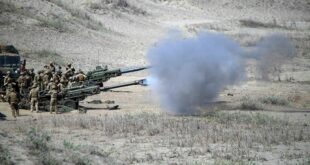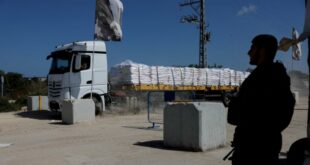Canada played crucial role in OSIRIS-REx mission that collected asteroid fragments.

A spacecraft that has travelled more than 950 million kilometres is dropping off a care package on Sunday: samples from an asteroid that lies more than 100 million kilometres from Earth.
NASA’s OSIRIS-REx (Origins, Spectral Interpretation, Resource Identification, Security-Regolith Explorer) launched in 2016 destined for an asteroid named Bennu. Its main mission: to stick an arm out, “high-five” the asteroid and then vacuum up some of the debris, referred to as “touch and go.”
It successfully did so in 2020. Now, the rocky samples — roughly 250 grams in total, the largest ever to return to Earth — are on their way to be studied by science teams, including those from Canada.
That’s thanks to our contribution of the OSIRIS-REx Laser Altimeter (OLA), an instrument that mapped out the asteroid in 3D in order to find a good place for the sample collection.

“It’s tough to put into words,” said Tim Haltigin, planetary senior mission scientist with the Canadian Space Agency (CSA) earlier this week. “September 24, 2023, always used to be this hypothetical date off in the future…. So, to think we’re just a few days away is unbelievable.”
Haltigin is just one of a contingent of Canadian scientists and engineers who worked on the OLA, and he’s anxiously awaiting its return.
“It’s almost like sending one of your kids off to college: You’ve done everything you can, you’ve worked as hard as you can for many years, you’ve put in a lot of love and effort,” he said.
“And you just send it on its way, hoping that you’ve done your best and that it’ll do its best. And in this case, we’ve had just an incredible mission.”
Now that college kid is returning home, not with dirty laundry, but with 4.5-billion-year-old rubble that could tell us more about how our solar system came to be.
Coming home
On Sunday, the spacecraft will release its sample capsule roughly four hours — or 100,000 kilometres — from the planet. The capsule will travel through the atmosphere at roughly 44,500 km/h before touching down in the Utah desert around 10:55 a.m. EDT.
From there, it will be taken by helicopter to a clean lab and transported to its home at NASA’s Johnson Space Center in Houston, Texas, the next day. NASA plans to reveal the sample on Oct. 11.
But that won’t be the end of the spacecraft — its mission has been extended and renamed the OSIRIS-APEX (OSIRIS-APophis EXplorer). It will fly by another asteroid named Apophis, a 370-metre rocky body that will come within 32,000 kilometres of Earth in 2029.
Once again, the OLA will map out the asteroid, while other data is collected to see how it changes as it nears the sun.
Getting the samples was a seven-year process. OSIRIS-REx blasted off from Cape Canaveral on Sept. 8, 2016, arrived at Bennu in 2018, collected its sample in 2020 and began its return home in 2021.
As with most space missions, there were some surprises. First and foremost was the first look at this walnut-shaped asteroid, which appeared much rockier than anticipated.
Then there was the sample-taking itself.
“The original plan was, there’s about a 10-foot arm that was extended from the end of the spacecraft. And at the end was a sampling device that sort of looks like the air filter in your car. And it was meant to sort of just come down slowly and give a gentle high-five to the surface of the asteroid,” Haltigin said.
Then, it would pump some nitrogen gas and collect what was blown up from the surface and pull away. But that’s not exactly what happened.
“What ended up happening is we gave it the high–five, but then we kept on going,” said Haltigin. “The asteroid was so weakly held together that we actually went down into the subsurface a lot more than anyone ever expected.”

As a result, because it collected so much, there was a brief fear that much of the samples were jamming the rim of the lid. Eventually, however, the capsule was able to seal itself, containing its precious cargo.
Canadian scientists wait patiently
Only 25 per cent of the 250-gram sample will be available for study, with four per cent going to the Canadian Space Agency. A further 0.5 per cent will go to the Japanese Aerospace Exploration Agency (JAXA) as part of collaboration between NASA and JAXA from the Japanese Hayabusa2 mission that delivered samples from the asteroid Ryugu to Earth in 2020.
While four per cent of 250 grams may not seem like a lot, Caroline-Emmanuelle Morisset, a program scientist in space exploration development at the CSA, says that’s plenty.
“With milligrams of sample, we can do a lot of science,” she said at a technical briefing last week. “A good example is, the Hayabusa2 mission from JAXA brought back altogether five grams. And you know, there’s still decades to come of results on Hayabusa2. So [the CSA’s allotment is] a great-size sample.”

It will take some time for the samples to come to Canada, as there is no clean lab to house it yet. There isn’t a concern about anything from space contaminating Earth, but rather something from Earth contaminating a 4.5-billion-year-old sample.
“We’re working on developing the facility for receiving the samples at the CSA,” said Morisset. “And there was an RFP [request for proposal] that was out in the spring for the construction of the room. That’s where we’re at now… It’s been understood since the beginning the sample will reside at NASA for some time before it’s transferred to Canada.”
For Haltigin, it’s an exciting opportunity after more than a decade of waiting, even if it takes a bit more time.
“This is the first time that Canada has ever been involved in a sample-return mission. This makes us only the fifth country on Earth that will be housing materials returned from space,” he said. “So it’s really incredible for Canada that we’re going to be able to make these samples available to generations and generations of Canadian science and scientists.”
ABOUT THE AUTHOR

Senior reporter, science
Based in Toronto, Nicole covers all things science for CBC News. As an amateur astronomer, Nicole can be found looking up at the night sky appreciating the marvels of our universe. She is the editor of the Journal of the Royal Astronomical Society of Canada and the author of several books. In 2021, she won the Kavli Science Journalism Award from the American Association for the Advancement of Science for a Quirks and Quarks audio special on the history and future of Black people in science. You can send her story ideas at Nicole.Mortillaro@cbc.ca.
*****
Credit belongs to : www.cbc.ca
 Atin Ito First Filipino Community Newspaper in Ontario
Atin Ito First Filipino Community Newspaper in Ontario






